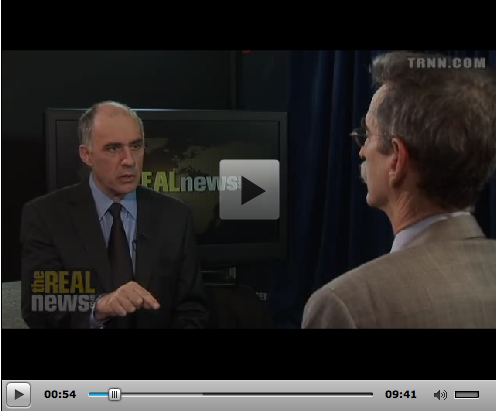Go figure: Bush Treasury Secretary Hank Paulson and then NY Fed President Tim Geithner misled the public as to how bad AIG’s position actually was.
The two failed to disclose to the public that the AIG problem was even worse than reported. They described AIG’s problems as a “cash squeeze” when it was in fact a full blown bailout of AIG. WHat was supposedly a loan to a distressed company in fact was a bailout of dubious legality.
Had the reality of the situation been properly disclosed, the $185 billion rescue might not have been made. Hence, the fraud.
Here is McClatchy:
“At the peak of the 2008 financial crisis, then-Treasury Secretary Henry Paulson and top Federal Reserve officials told the nation that there was an urgent need for the government to lend $85 billion to the American International Group so the giant insurer’s temporary cash squeeze wouldn’t trigger global financial chaos.
Nearly two years later, taxpayers are on the hook for twice that amount, and it now appears that Paulson and senior Federal Reserve officials either plunged ahead without understanding AIG’s financial situation and the risks it posed to taxpayers — or were less than candid about one of the largest corporate bailouts in U.S. history.”
The key issue is whether the government had the legal authority to bailout AIG if they were insolvent. Hence, the motivation for ddeclaring a cash squeeze rather than a full blown bailoutThere is the secondary question of whether the rescue of AIG, as orchestrated by Henry Paulson, was really an indirect rescue of Goldman Sachs.
Recall that more than $90 billion in rescue money “flowed out the back door” of AIG to the banks that helped create the crisis. Of course, by now most everyone is aware just who the leading beneficiary of the federal/AIG largesse was: Goldman Sachs, where Paulson was CEO until June 2006.
When I first looked at AIG when researching Bailout Nation, it had appeared to be a “clean” insurance company with a renegade derivatives division called AIG Financial Products (AIGFP).
That turns out to be a false narrative. I missed the fact that the rest of AIG, according to McClatchy’s recent investigation, was also in deep trouble, as it too, was neck deep in derivatives. Not the $3 trillion that AIGFP was exposed to, but “$200 billion.”
For a supposedly prudent insurance company, this is a a ridiculous amount of risk:
“As the Fed wired billions of dollars to AIG in the fall of 2008, state and federal officials assured the public that the company’s financial woes were limited largely to [AIG FP], which had wagered $2 trillion on exotic financial instruments and incurred massive losses on housing-related investments. AIG’s six dozen U.S.-based insurance companies, the regulators said, were all on solid footings.
A McClatchy analysis of the finances of 20 of AIG’s larger insurance subsidiaries at the time has found a much bleaker picture, however: More than $200 billion in potential red ink was obscured by entanglements in which these subsidiaries bought stock in, reinsured or guaranteed debts of their sister companies.
Despite the regulators’ public assurances and AIG’s assertion that pooling arrangements among its subsidiaries made the liabilities look worse than they actually were, AIG has since propped up its insurance subsidiaries with $31 billion of taxpayers’ dollars, and its total debt to taxpayers — once as much as $182 billion — still could reach $162.5 billion.”
The fun never stops . . .
>
>
Source:
AIG’s problems far greater than Bush officials told public
Greg Gordon
McClatchy Newspapers, June 8, 2010
http://www.mcclatchydc.com/2010/06/08/95534/aigs-problems-far-greater.html



What's been said:
Discussions found on the web: